The handlebar is the most important contact point on your mountain bike. While many riders settle for the stock handlebar on their bike, upgrading your cockpit to something that suits both you and your riding style can make a significant difference to your experience on the trails.
Your bike's handlebar affects how the bike steers and handles, and, as a key component in mountain bike fit, plays a large part in how comfortable you feel on the bike.
As a general rule, the more technical and aggressive the bike and riding style, the wider and burlier the handlebar will be.
A downhill, trail or enduro rider is going to appreciate the greater control offered by a wider bar, which in turn is more likely to have a rise to help you put your weight over the back of the bike on technical terrain.
On the other hand, a cross-country rider is going to appreciate the more responsive position and weight saving of a lighter, narrower, flat bar, which will put more of your weight over the front of the bike for steep XC-style climbs.
In this buyer's guide, we'll delve deeper into the world of mountain bike handlebars to help you find the right option for you, before recommending some of our favourite bars for trail riding.
If drop bars are your thing, we've got a separate guide to road bike handlebars. We also have a best gravel handlebars list.
What to look for when choosing a mountain bike handlebar
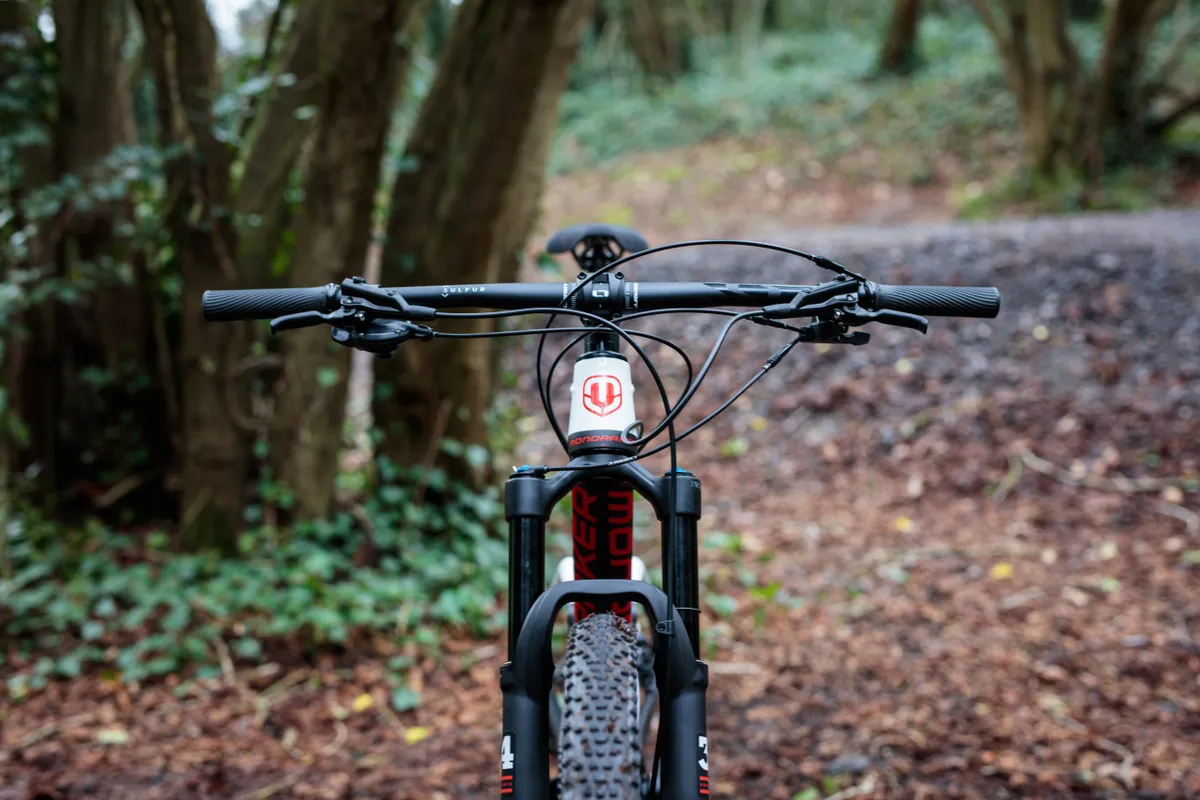
While there are no hard and fast rules when it comes to handlebar choice, often it comes down to finding a sweet spot between riding style, terrain and body dimensions.
As is the case when choosing the best mountain bike grips, a lot of what makes a handlebar the right choice for you is governed by personal preference and demands.
Ultimately, the best way to find out which is the best handlebar for you is by trying out different designs and styles. That's not always easy, of course, so here's what you should keep in mind when looking for a new handlebar.
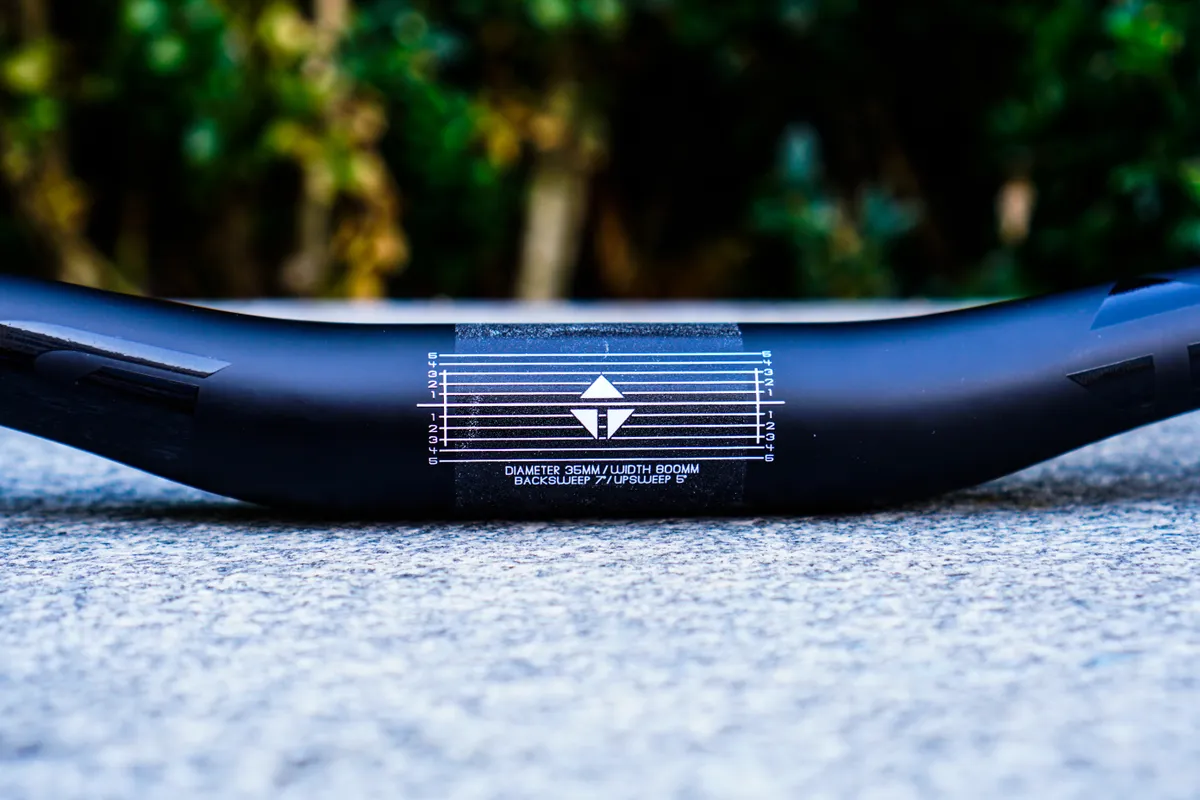
The most important things to consider when looking for a mountain bike handlebar are:
- Width
- Rise and sweep
- Clamp diameter
- Material
How wide should a mountain bike handlebar be?
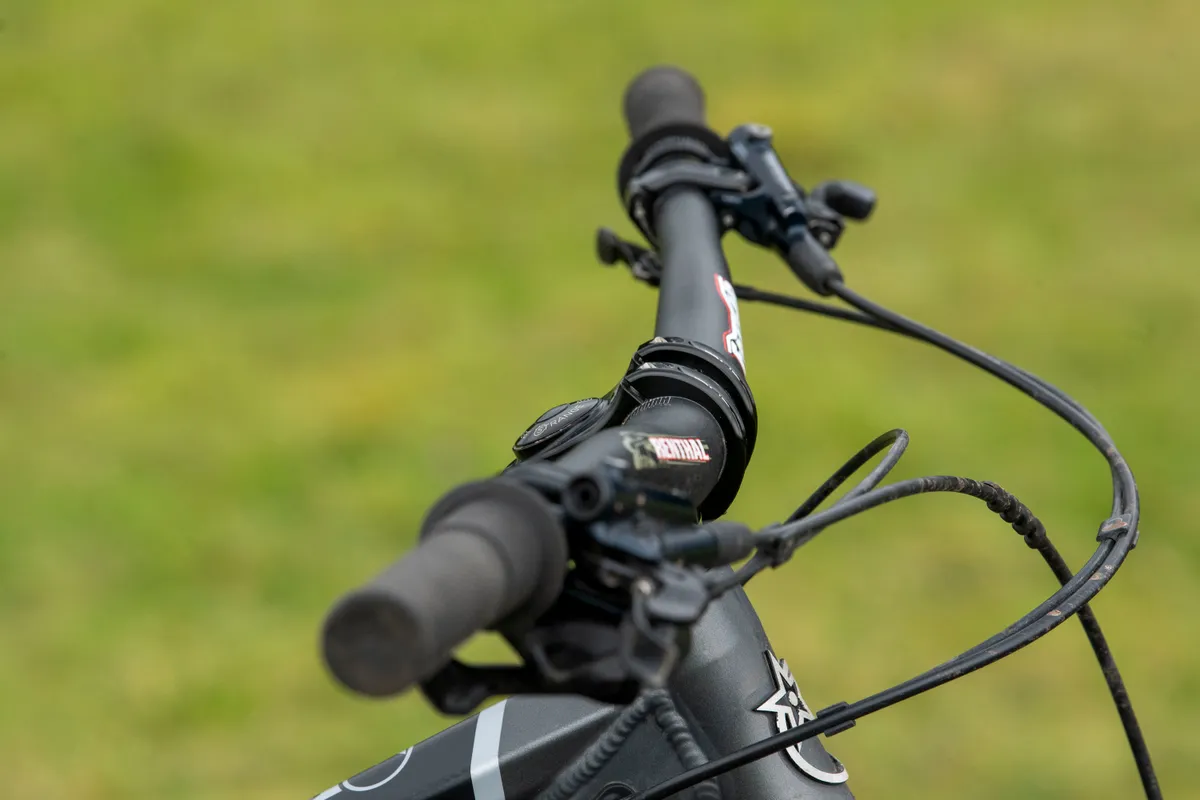
Over the years, mountain bike handlebars have got progressively wider, because increased width can improve control of the bike. Some also believe it can open up your chest and improve breathing.
The wider the bar, the more leverage you can apply to the front wheel to force the bike onto more aggressive lines. Turning or wheel-grabbing forces created by the trail are also reduced at the bar end, so it’s easier to keep the bike on target.
A given amount of hand movement also has less impact on the steering angle of the wheel, so you have more accurate fine control of the front tyre.
The overall effect is similar to having a slacker head angle, which suddenly makes the price of a new bar seem reasonable.
Today, mountain bike handlebars tend to be between 700mm and 800mm in width.
As you get progressively wider, and once you head into the mid-700mm range, consider the type of terrain you’re riding. Wider bars are also harder to fit between trees, so riders frequently tackling technical singletrack may tire of threading a wide handlebar through tightly-packed trees.
Conversely, riders who rip aggressive trails at higher speeds are much more likely to benefit from a wider bar.
Cross-country bikes are more likely to be at the narrower end of the scale, though the latest XC bikes come with increasingly broad bars, while trail bikes, enduro bikes and downhill bikes are more likely to feature wider handlebars.
Handlebar width is relative to the rider and their bike, with handlebars getting wider as bike size increases – starting, for example, from 650mm for a size-small bike and moving up to 730mm to 750mm for a large or extra-large.
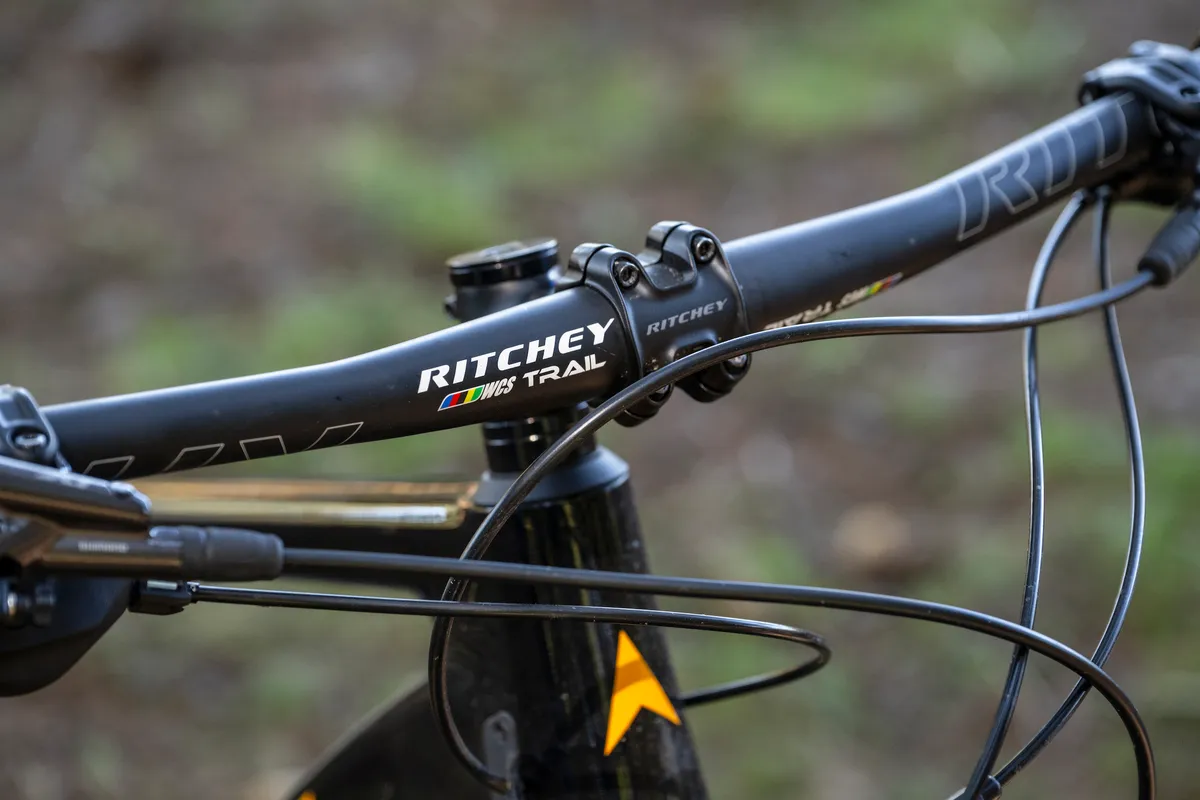
Any bars wider than this are most likely to be found on gravity-orientated downhill bikes or enduro bikes.
If you are unsure which handlebar width to choose, it's advisable to go for a bar that's slightly wider than you think you might need, because you can always cut it down.
If you switch to a wider handlebar, you might also want to change to a shorter stem because a wider bar will effectively increase the reach on your bike.
What are handlebar sweep and rise?

A flat bar is, as you'd expect, flat from one end to the other. Riser bars are more common and, as the name suggested, rise from the centre of the handlebar towards the grips.
You also need to consider the sweep of the handlebar, for which there are two measures: upsweep and backsweep.
Let's consider the definition of rise, upsweep and backsweep in turn.
Rise
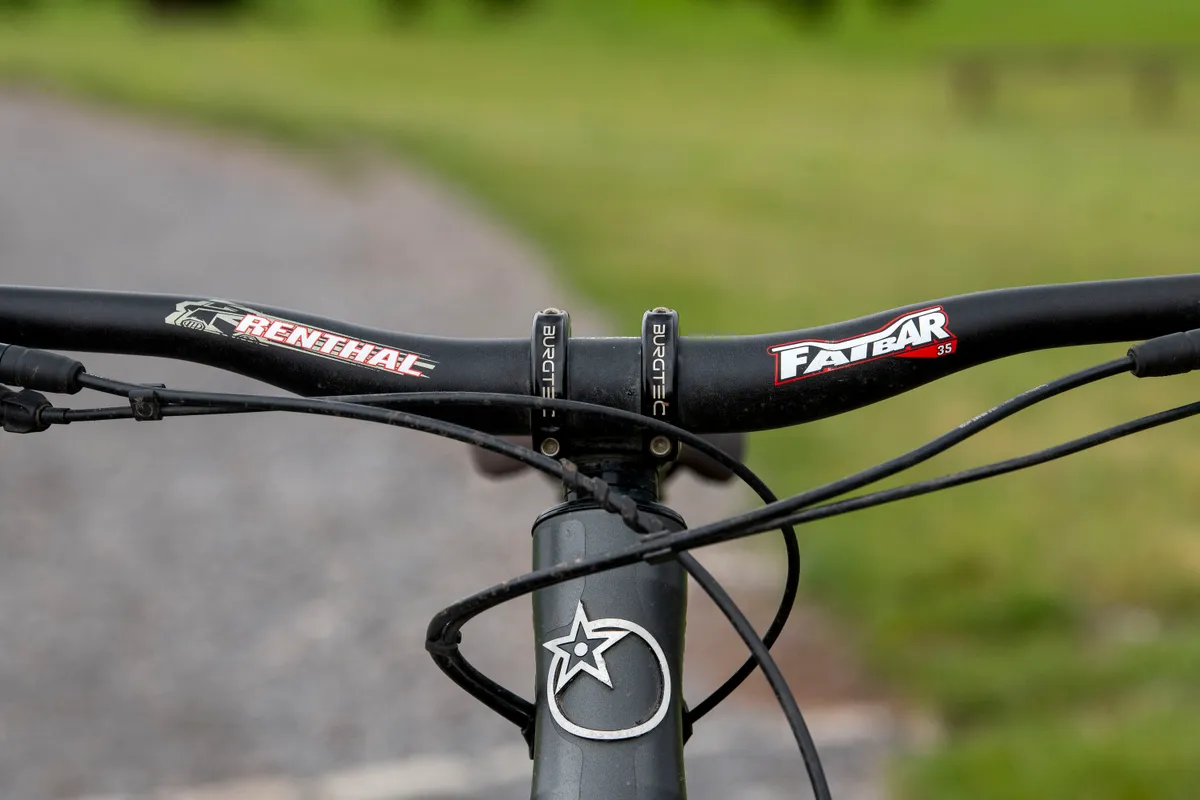
The vertical distance between the centre line of the bar at the stem clamp and at its tips.
Upsweep

Upsweep refers to how much the handlebar swings up, between the stem and the bar ends, and is measured in degrees from horizontal.
More upsweep gives more wrist rotation and means the bar shape changes more when you rotate it in the stem. Viewed from the front of the bike, you will see the ends of the bar sit typically around 5 degrees from horizontal.
Backsweep
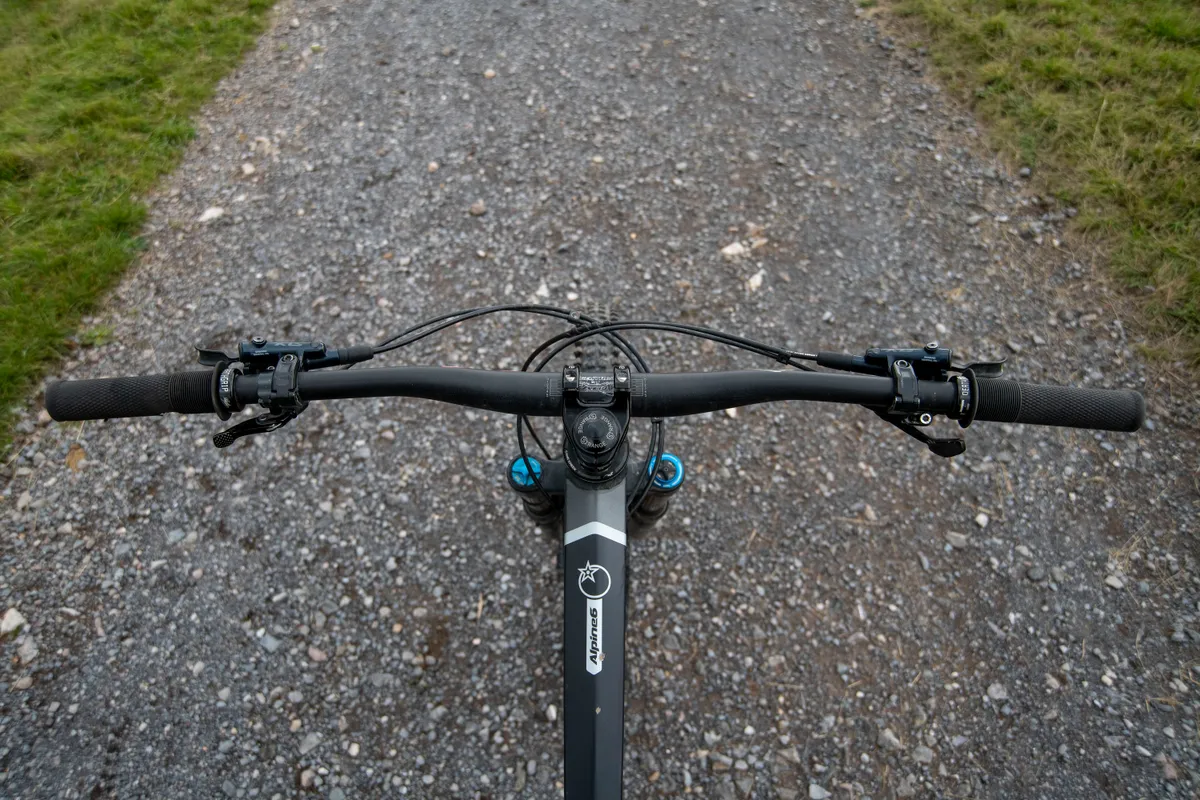
Backsweep measures how much the bar swings back from being perpendicular to the stem and is measured in degrees. More sweep mimics the effect of a shorter stem and changes wrist angle.
How handlebar choice affects bike fit and handling
While changing width makes the most obvious difference in terms of handling and fit, bar shape can also affect steering and comfort.
The amount of backsweep changes where your hands are in relation to the steering axis and, in turn, how roomy the cockpit of your bike feels and the position of your upper body on the bike.
More backsweep has a similar effect to fitting a shorter stem (and the wider the bar, the further back that sweep will bring your hands). A bar with less backsweep will lengthen your effective stem length.
If you’re swapping out your mountain bike bar, it's good to look for a bar that has the same backsweep to ensure you maintain a similar position. Unless, of course, you do want to alter the position of your body on the bike.
More rise/upsweep shifts your body weight up and back, reducing weight on the front wheel and making it easier to lift/wheelie/manual, as well as potentially putting you in a more comfortable position. However, you may find yourself more likely to slide out in corners or loop out on climbs.
A lower, flatter bar will put you in a more aggressive attack position with your weight further over the front wheel, which can help quicken turning and lead to less understeer.
On the other hand, it might also make it harder to lift the bike over any obstacles on the trail and lead to greater arm fatigue on steeper terrain.
Backsweep and upsweep angles also change the position of your wrists, and what feels great for one rider may feel awkward for another.
What about handlebar diameter?
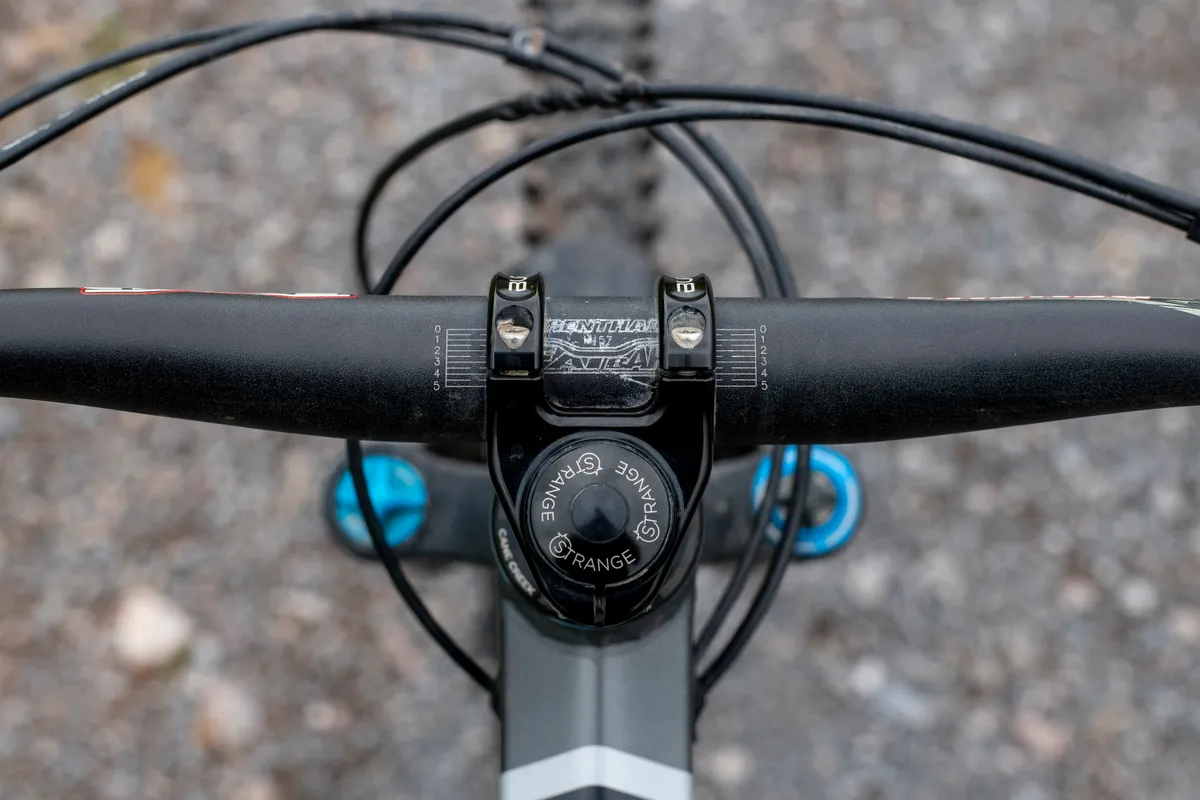
Mountain bike handlebars are available in only one diameter at the grips: 22.22mm. That means you can chop and change grips as you please.
However, clamp diameter can be either 31.8mm or 35mm. If you're changing your handlebar but not your stem, you'll need to make sure the diameter of both components matches up.
The mountain bike industry has been gravitating towards 35mm, particularly on downhill and enduro bikes, but 31.8mm bars are still commonly found.
A handlebar with a 35mm diameter can be stiffer than a 31.8mm bar, which will give a more direct feel when steering aggressively. However, sometimes a more forgiving bar can increase comfort.
Carbon vs aluminium handlebars
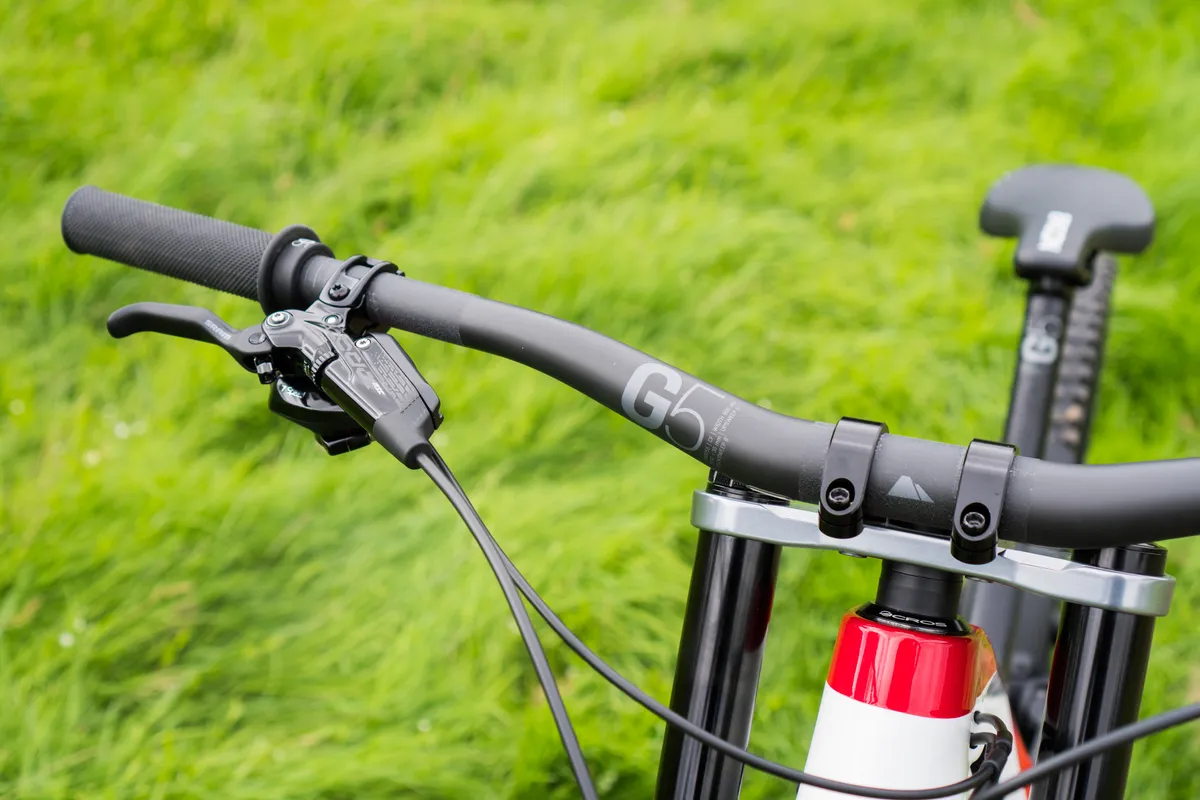
Mountain bike handlebars tend to be made from either aluminium or carbon fibre. You can also get titanium handlebars, but they're much less common.
Aluminium is a popular choice for the same reasons it remains a popular frame material: it's lightweight, durable and relatively cheap.
As a result, an aluminium handlebar can better withstand the rough and tumble of mountain biking and isn't going to blow a hole in your pocket.
Carbon fibre handlebars have a few advantages over aluminium bars. The flexibility in how carbon fibre can be layered up means a carbon bar can, in the right hands, do a better job of absorbing vibrations, helping to reduce fatigue in your arms.
Carbon fibre bars also tend to weigh less, making them a good choice for riders where weight is a real concern.
The significant downside to carbon fibre bars is the cost. They are also liable to being less durable when it comes to impacts.
Cross-country vs trail vs downhill handlebars
While width, sweep and rise can all be influenced by personal preference, here are some general guidelines according to riding discipline.
Cross-country handlebars

Cross-country handlebars tend to be flat, or have limited rise and sweep, to keep the handling quick and the rider's weight over the front of the bike. This will help put you in a better position for climbing.
Carbon fibre can also help keep the weight of the bike down if you're chasing every gram. Some XC bikes have integrated cockpits, combining the handlebar and stem in one unit – a trend borrowed from the latest aero road bikes.
These days, cross-country handlebars typically start around 700mm wide and rise to around 780mm on the rowdiest downcountry-adjacent XC bikes. However, in the not too distant past, it wasn't uncommon to see XC bikes with bars as narrow as 600mm.
Trail handlebars
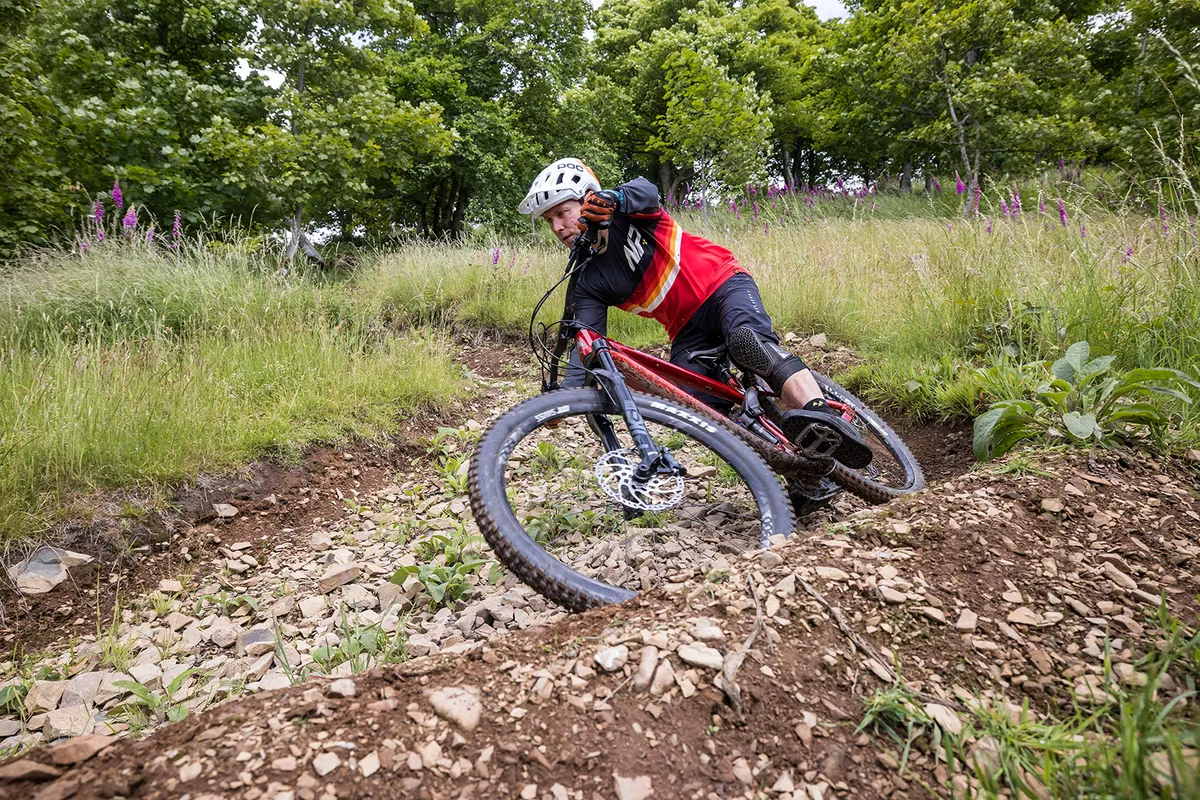
Trail handlebars are often the most varied – unsurprising given the variety of terrain trail bikes are capable of taking on.
Regardless, trail bars tend to be wider than cross-country bars, with more emphasis on control and stability on technical downhill terrain.
Trail handlebars will start around 740mm wide, but it wouldn't be unusual to see a 780mm or even 800mm bar on some bikes.
The additional width may also prove more comfortable on long days out in the saddle, as will carbon fibre thanks to its damping properties.
Trail riders are much more likely to use a riser bar (something with around 20mm or 30mm of rise is typical) to improve handling over more technical terrain and to plant their weight more firmly over the bottom bracket. Back sweep for trail bars typically ranges between seven to 10 degrees.
Downhill handlebars
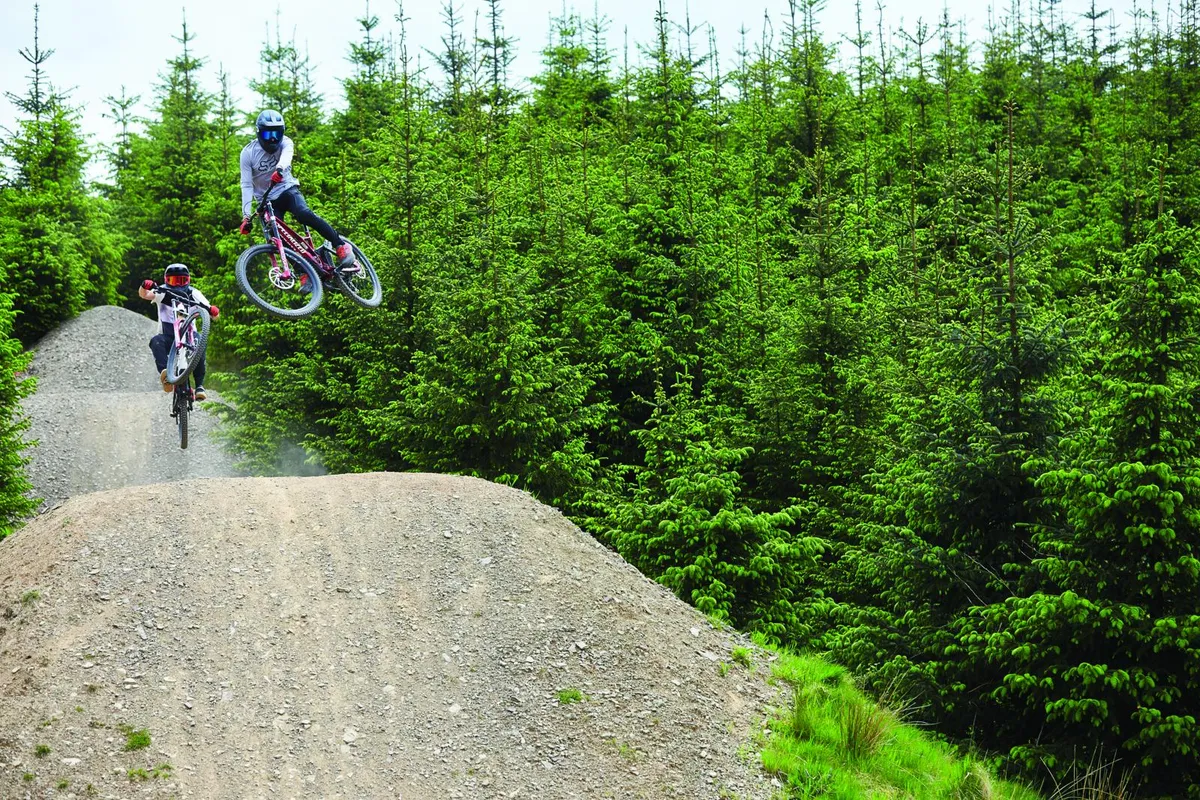
Here's where width is most important, thanks to the extra control and stability afforded when hurtling down super-technical descents at high speed.
Downhill bars can exceed 800mm in width, but personal preference still comes into play. Look at the handlebars used by professional downhill racers and you might see some as narrow as 750mm.
Downhill handlebars tend to have the most rise (up to 40mm), helping the rider lift the front of the bike over obstacles and get their weight over the back wheel.
Some choose carbon bars for downhill bikes, but durable aluminium bars are the preference for the majority.
Best mountain bike handlebars 2025
Hope Carbon Handlebar 35mm
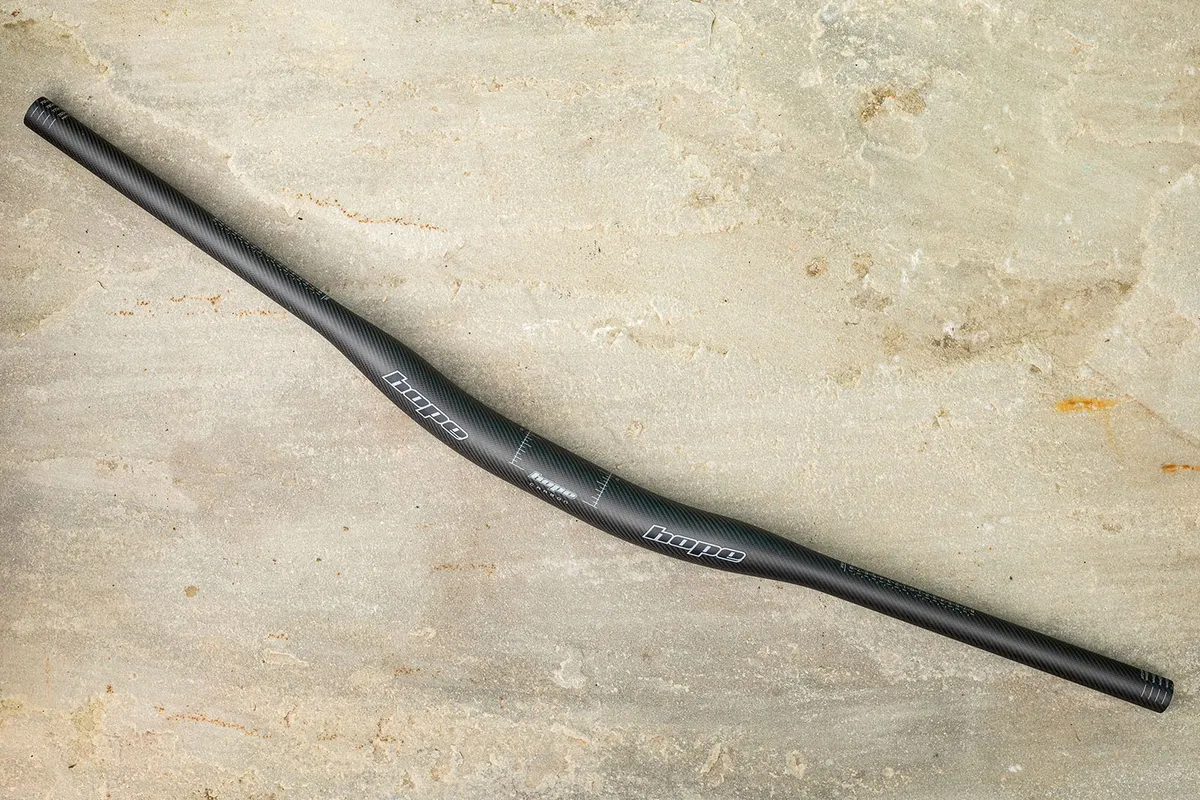
- £170 / $215 / €215 as tested
- 35mm clamp
- 800mm width
- 20mm rise
Hope's Carbon Handlebar is handmade in the UK from carbon fibre and features a 7-degree backsweep.
The bar offers a reassuringly sturdy feel, while maintaining good vibration damping that helps with steering directness on chattery terrain.
Hope's Carbon Handlebar offers bulbous looks and an exposed carbon weave that features a hard outer coating that fends scratches off well.
Our uncut bar weighed in at 244g.
Renthal Fatbar35
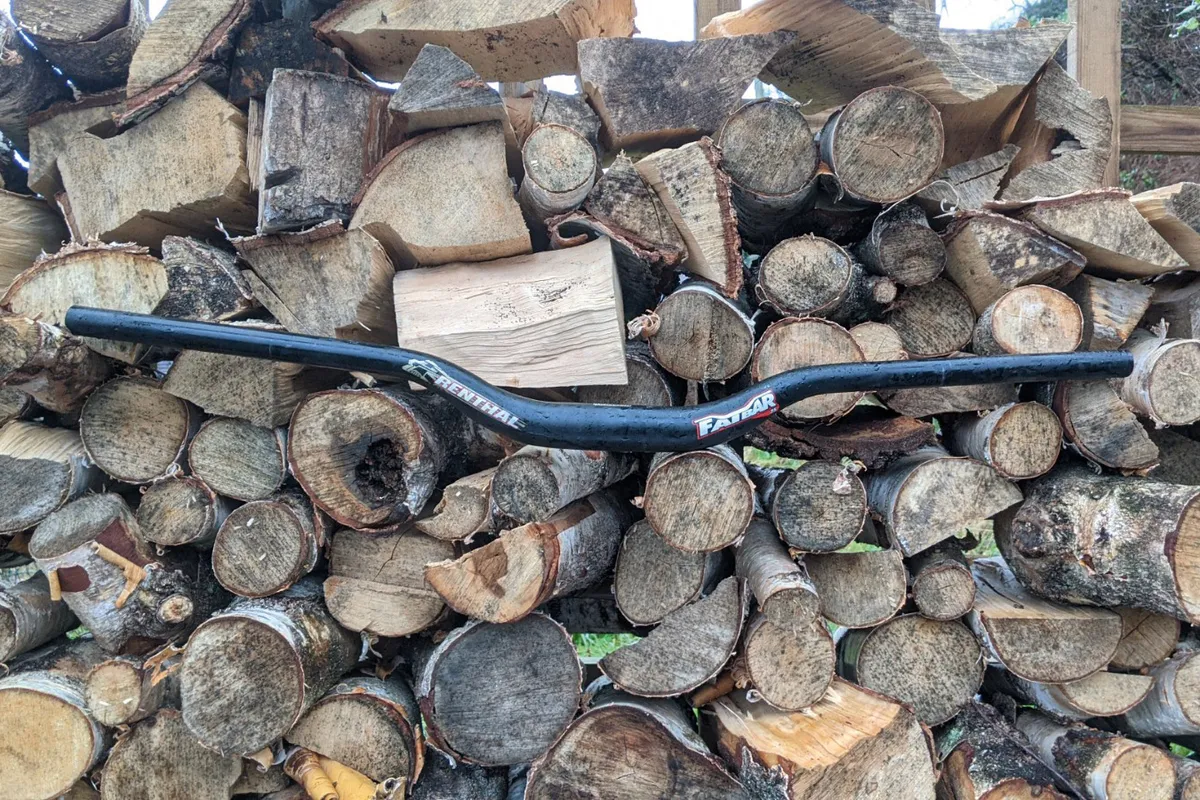
- £70 / $89 as tested
- 35mm clamp
- 800mm width
- 40mm rise
The Renthal Fatbar35 is an alloy bar with a 7-degree backsweep that makes it a good choice for riders who favour a forward, elbows-out position. It also makes it slightly easier to weight the front wheel.
It’s one of the comfiest bars we've tested and we didn’t notice much difference in ride feel compared to the carbon version (which costs considerably more).
At 303g, the alloy Fatbar35 is heavier than its carbon competitors, but not by a noticeable amount when riding.
Spank Spike 35 Vibrocore
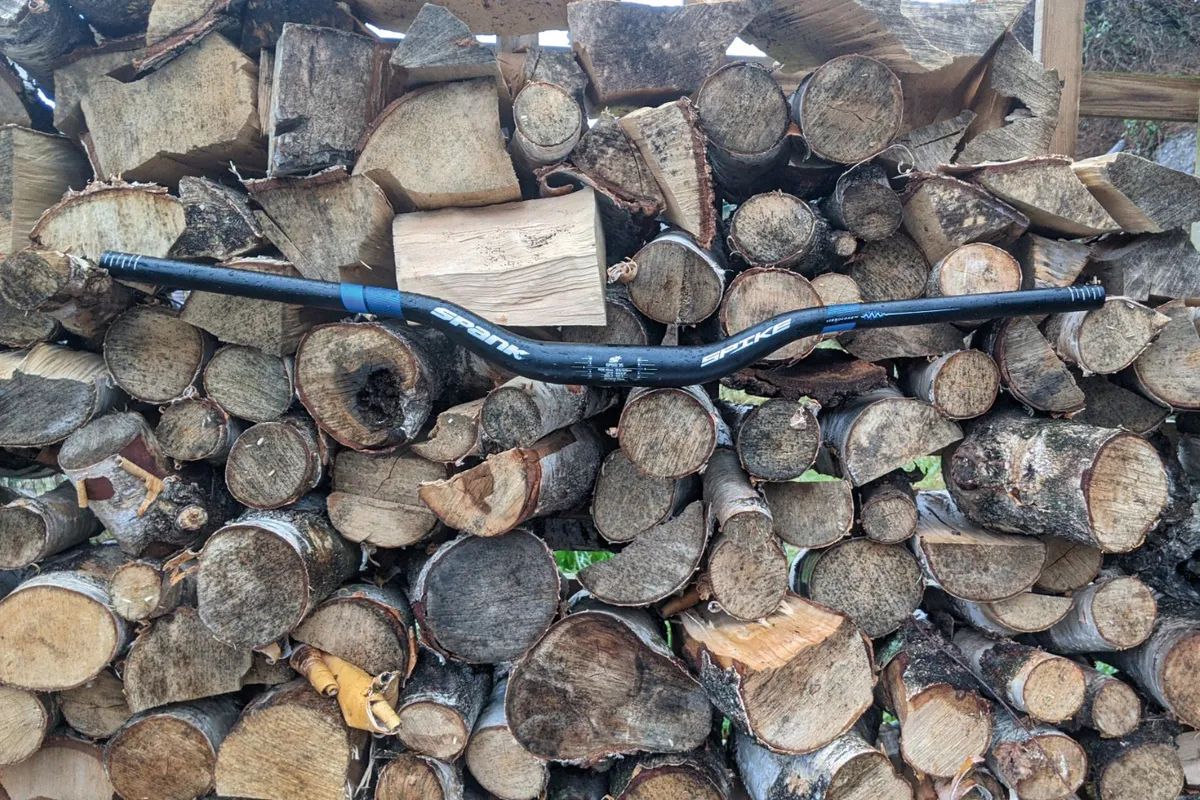
- £100 / $100 as tested
- 35mm clamp
- 824mm width
- 40mm rise
Spank's USP is its Vibrocore insert. Essentially, the cavity inside the bar is filled with foam to damp vibrations. This should mean less feedback and harshness on rough trails. It does seem to work, to an extent – the Spike 35 certainly is a comfy bar.
At 824mm, our bar was 4mm wider than advertised and 24mm wider than the upper limit of most bars on the market.
For taller riders, this boosts stability in fast and technical sections without too many trees, and it can always be cut down. This bar is on the heavier end at 363g.
Though it's a very small difference, we prefer Renthal’s 7-degree backsweep to the 8-degree sweep of the Spank bar.
Nukeproof Horizon V2 Carbon Riser Bar
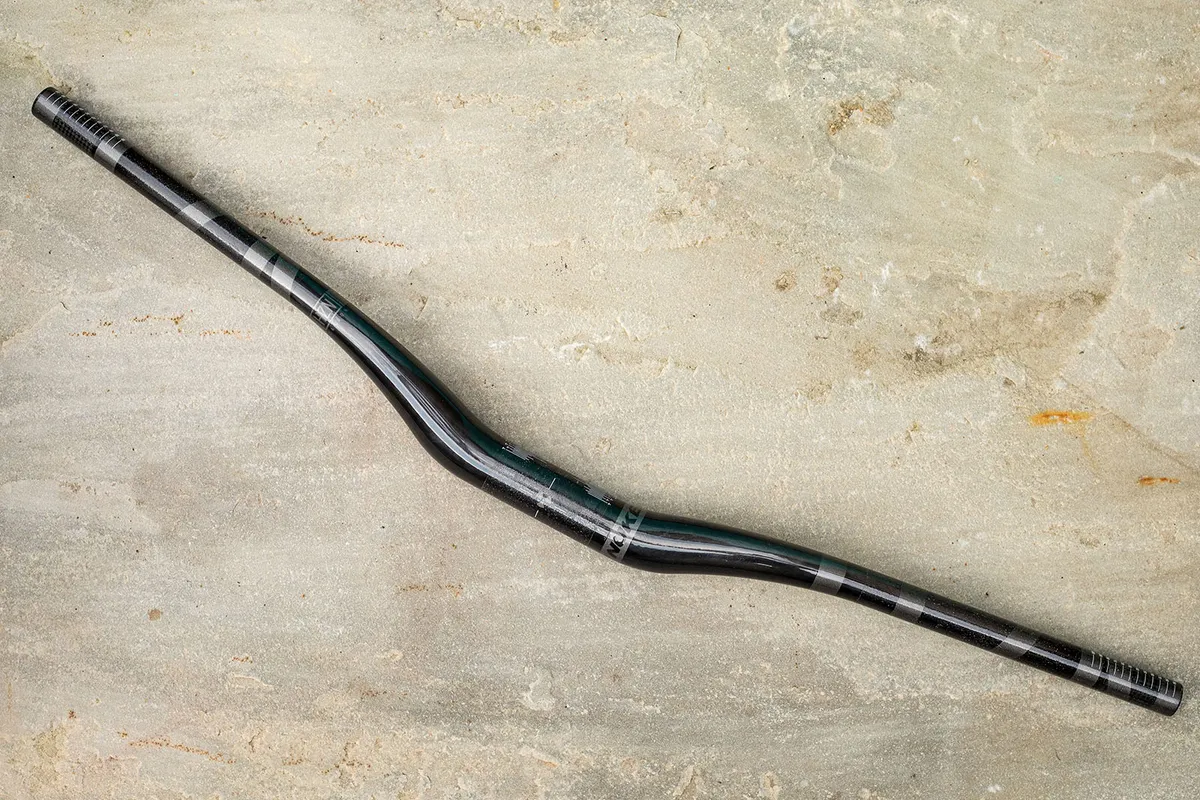
- £110 / $150 / €130 / AU$202 as tested
- 35mm clamp
- 800mm width
- 25mm rise
Nukeproof's Horizon V2 offers a smooth and solid-feeling ride, with the bar providing a natural shape for downhill riding.
The carbon handlebar offers competitive weight and value for money, with our bar weighing in at 235g.
While it's stiff, the bar remains supple and offers good vibration damping over rough terrain.
We did, though, find the gloss black finish wore easily, with hairline scratches visible after a couple of rides.
Santa Cruz Riser Carbon Bar

- £150 / $170 as tested
- 35mm clamp
- 800mm width
- 25mm rise
Santa Cruz's Riser Carbon Bar provides a solid yet well-damped feel, which aids in accuracy on bumpy trails.
The bar uses an oval shape to add strength horizontally, while increasing vertical compliance.
We found the bar held up well cosmetically after a few rides, with Santa Cruz offering a lifetime warranty for damage.
Though some riders may find the branding off-putting, the black-on-black colour combo is quite discreet.
Our uncut bar weighed in at 224g.
Also consider…
The following handlebars scored fewer than four out of five stars in our test but are still worth considering.
Race Face Next R 35
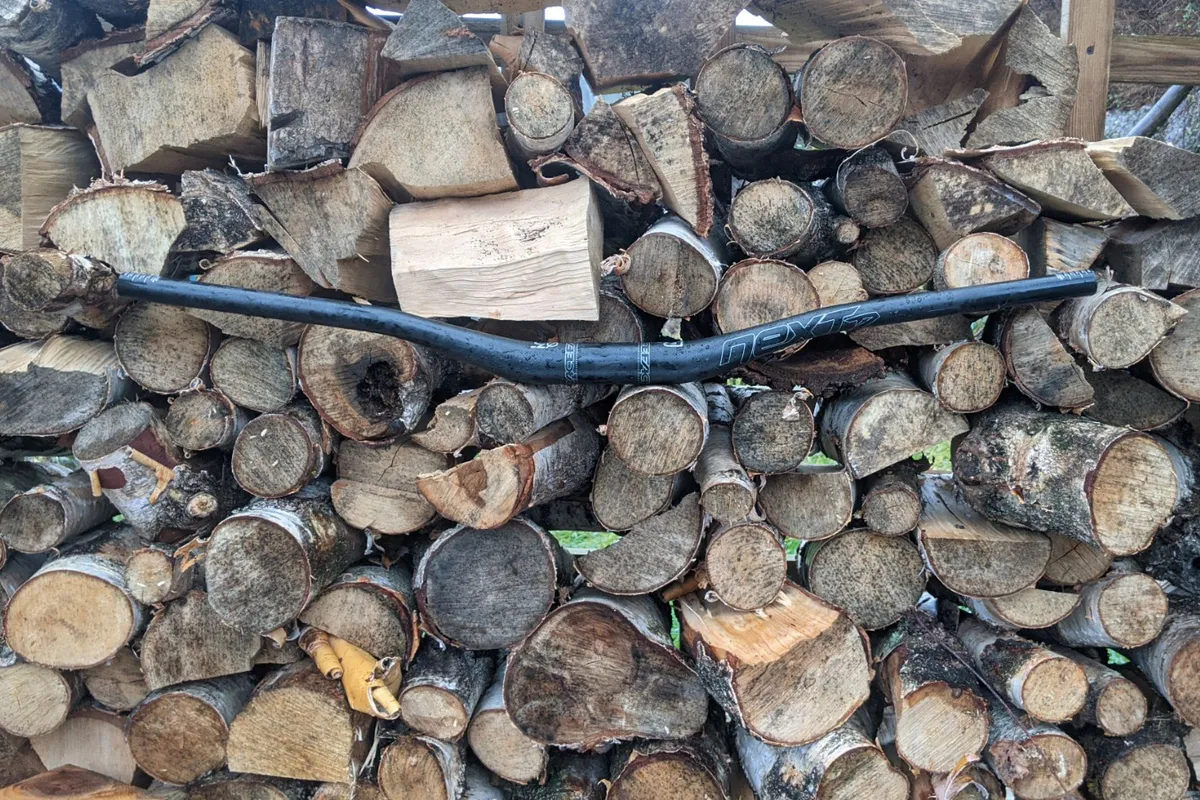
- £130 / $180 as tested
- 35mm clamp diameter
- 800mm width
- 35mm rise
The Race Face Next R 35 is made from a unidirectional carbon fibre construction and has an impressive 221g weight. It has a less stiff feel than other carbon bars, reducing harshness slightly with no noticeable loss of precision.
The 8-degree backsweep is in the middle of the typical range seen on wide bars, so it feels neither overly relaxed nor as straight as others. Accurate marks on the end of the bar make it easy to cut down to your desired width.
Like on most carbon bars, the brake levers and grips can twist too easily, even when torqued up to spec. Grip paste can make a difference, but it's still an annoying issue to have. The Next R 35 is towards the top end of the price range, too.
Renthal Fatbar Carbon35
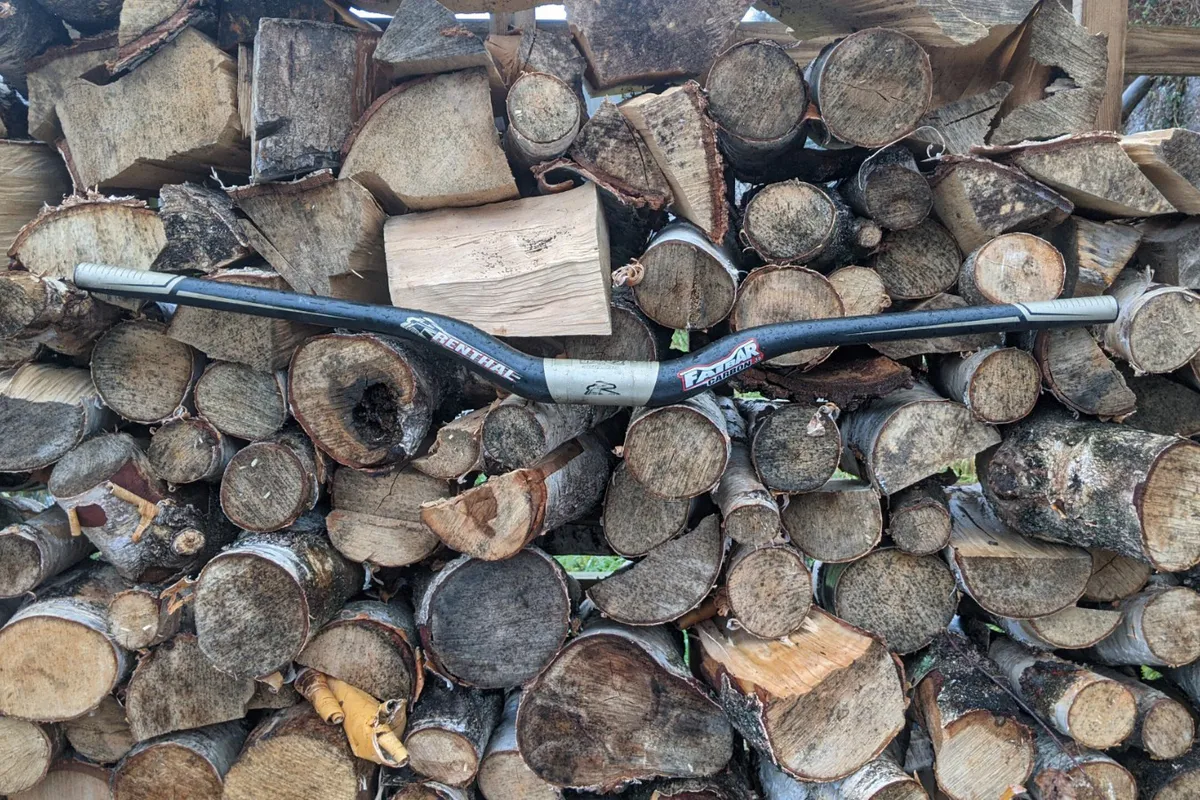
- £135 / $177 as tested
- 35mm clamp diameter
- 800mm width
- 40mm rise
Weighing 219g, the Fatbar Carbon35 is light, but the 7-degree backsweep is what sets Renthal’s bar apart.
This slightly straighter shape is great for those who want to get over the front of the bike for more front-wheel grip. If you like to hang off the back, you may prefer something with more sweep. It’s also flexible, which helps with comfort.
The bar is expensive, though, and Renthal recommends applying no more than 5Nm of torque when clamping on your controls – and that won't be enough to stop them from twisting occasionally.
Also tested…
e*thirteen Race 35 Carbon
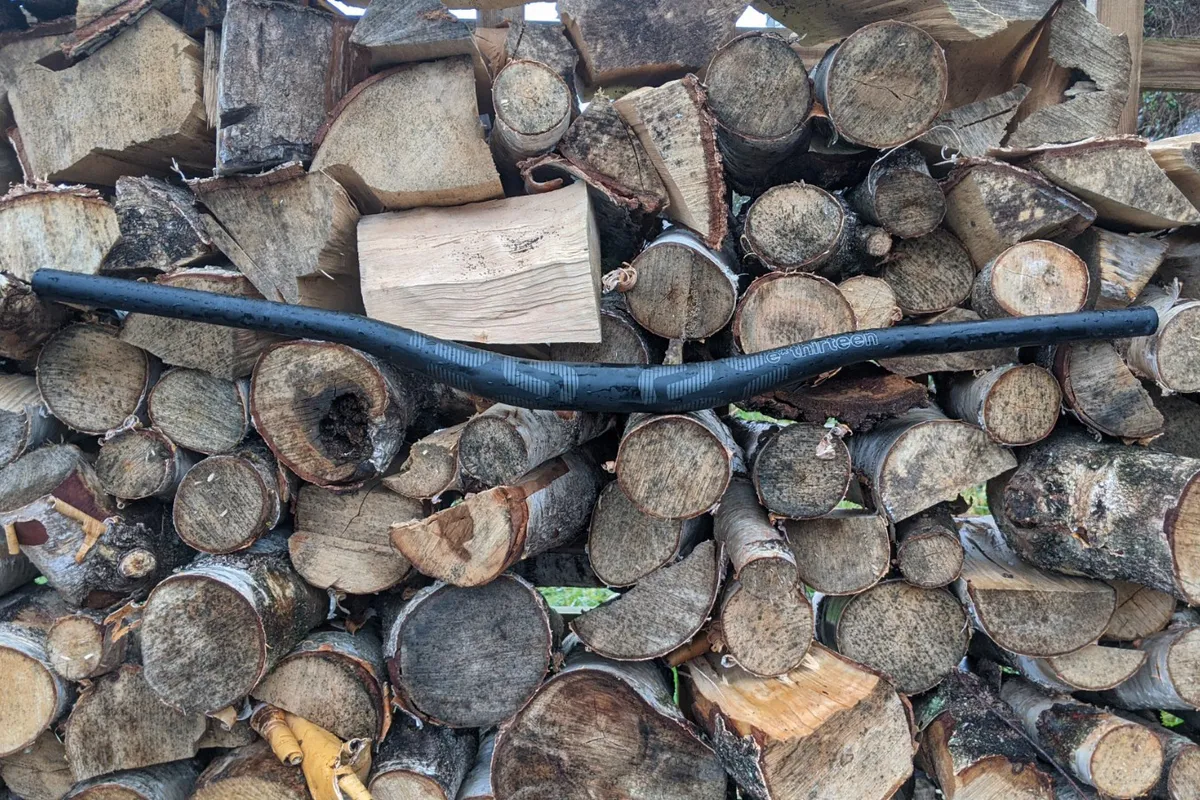
- £125 / $139 / €139 as tested
- 35mm clamp diameter
- 800mm width
- 35mm rise
At 219g, e*thirteen’s top-end handlebar is one of the lightest full-width options around. Compared to other carbon bars, brake levers stay in place a little more reliably on the Race Carbon when tightened to the same torque setting (6Nm).
The bar is stiff, so there’s a little more feedback over harsh trail chatter. The 9-degree backsweep puts your hands slightly further back than the other bars, and if you roll it forwards to retain an aggressive position, this puts more pressure on the outside of your hands.
